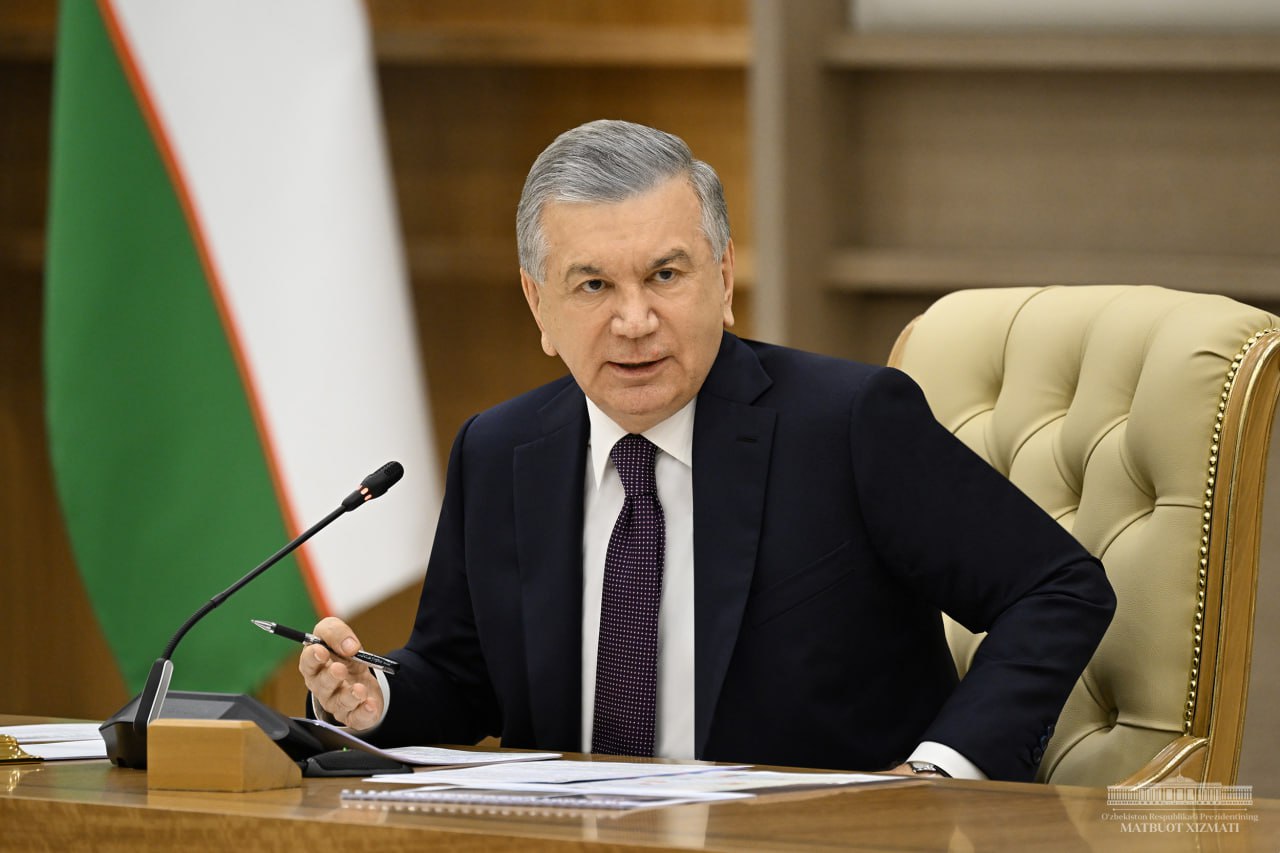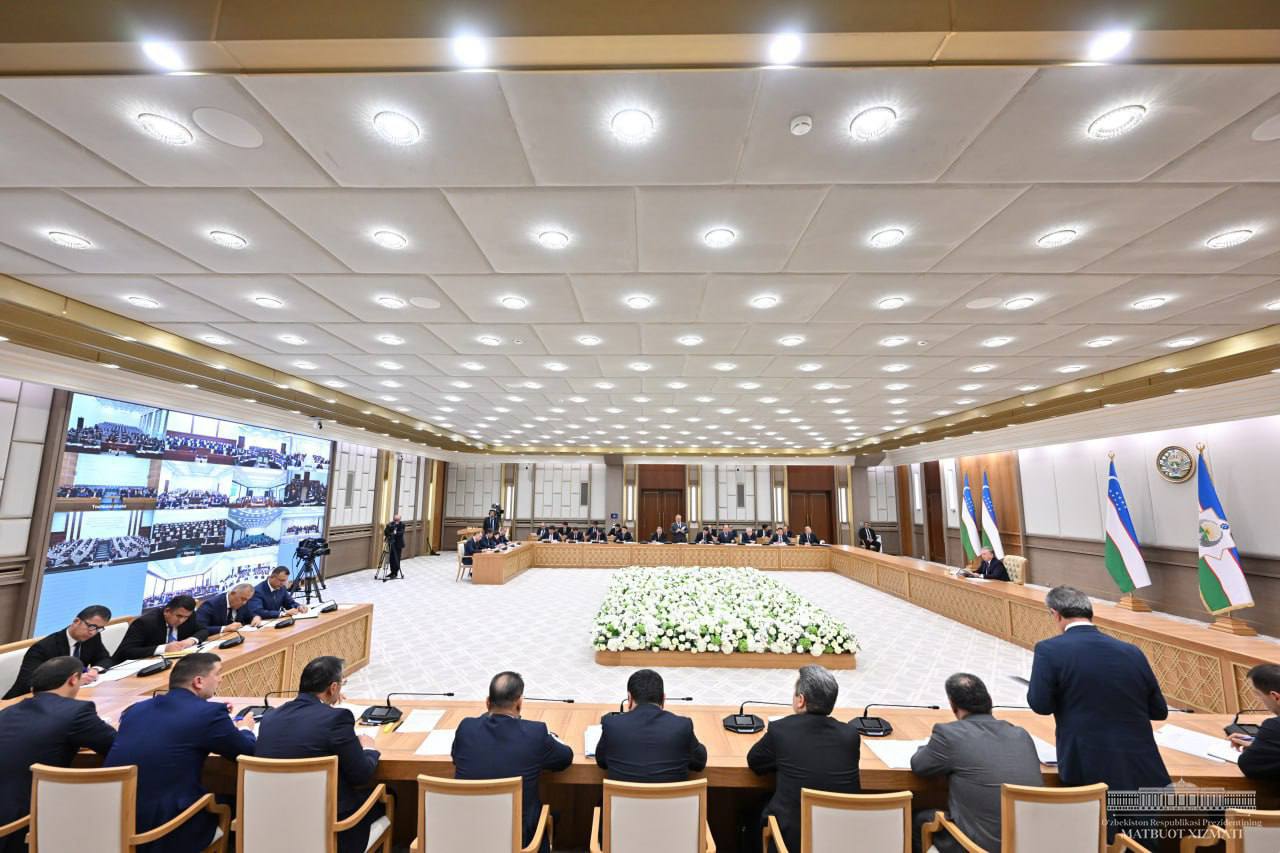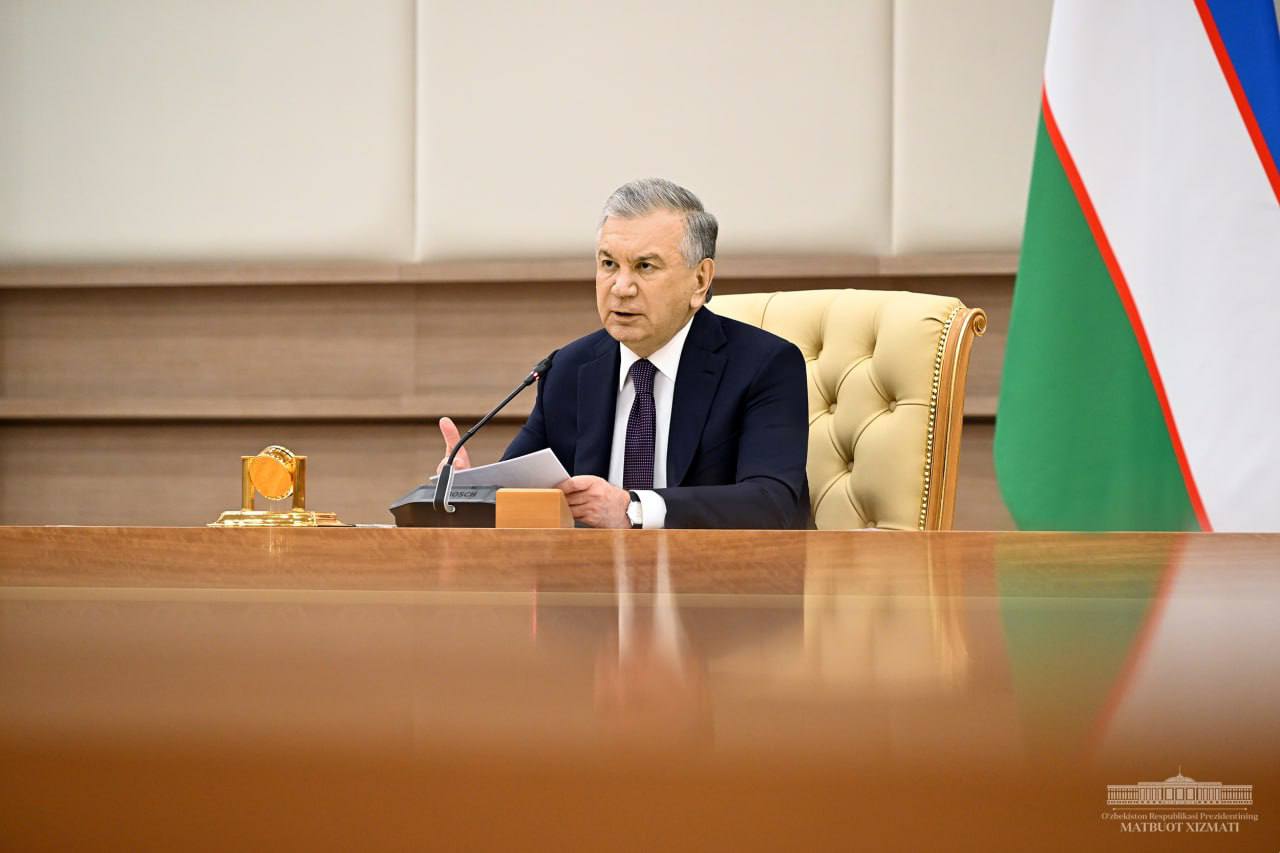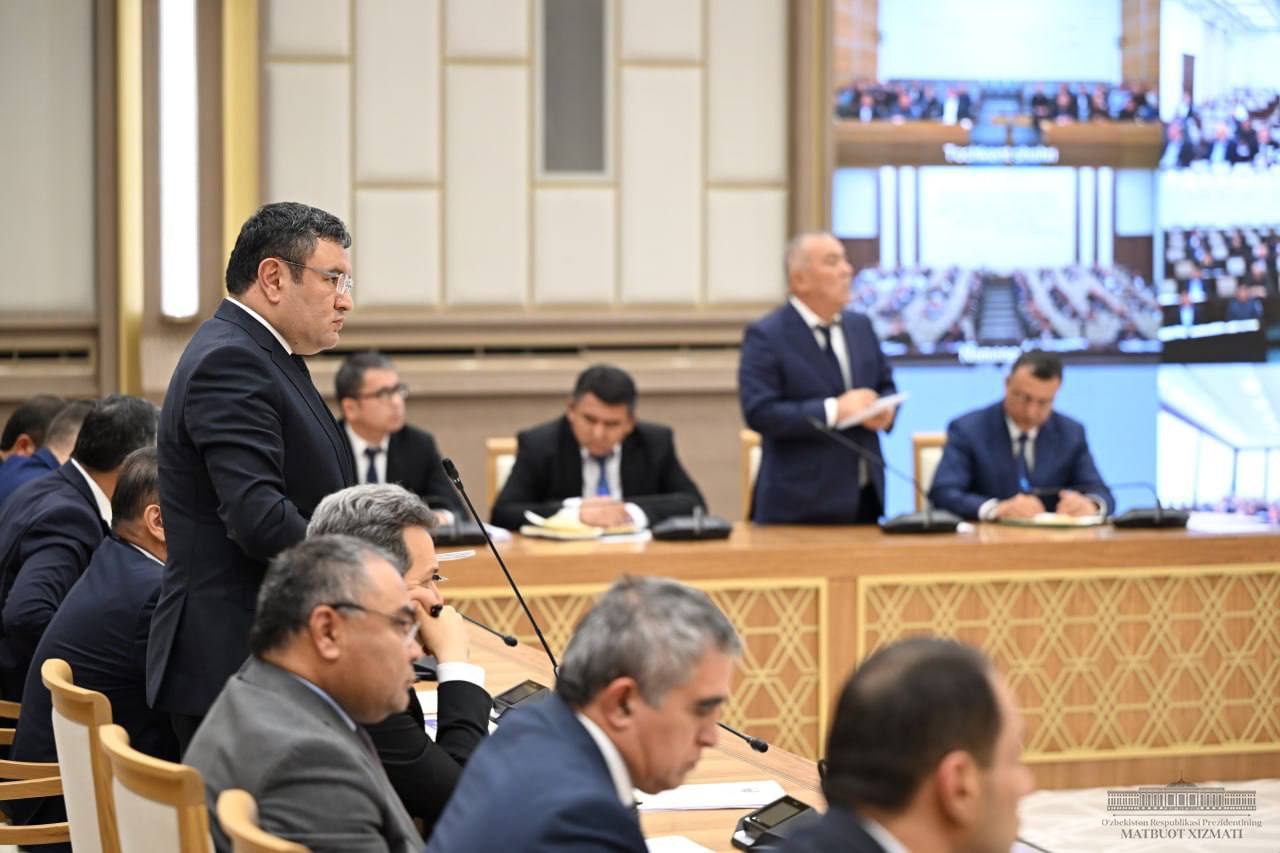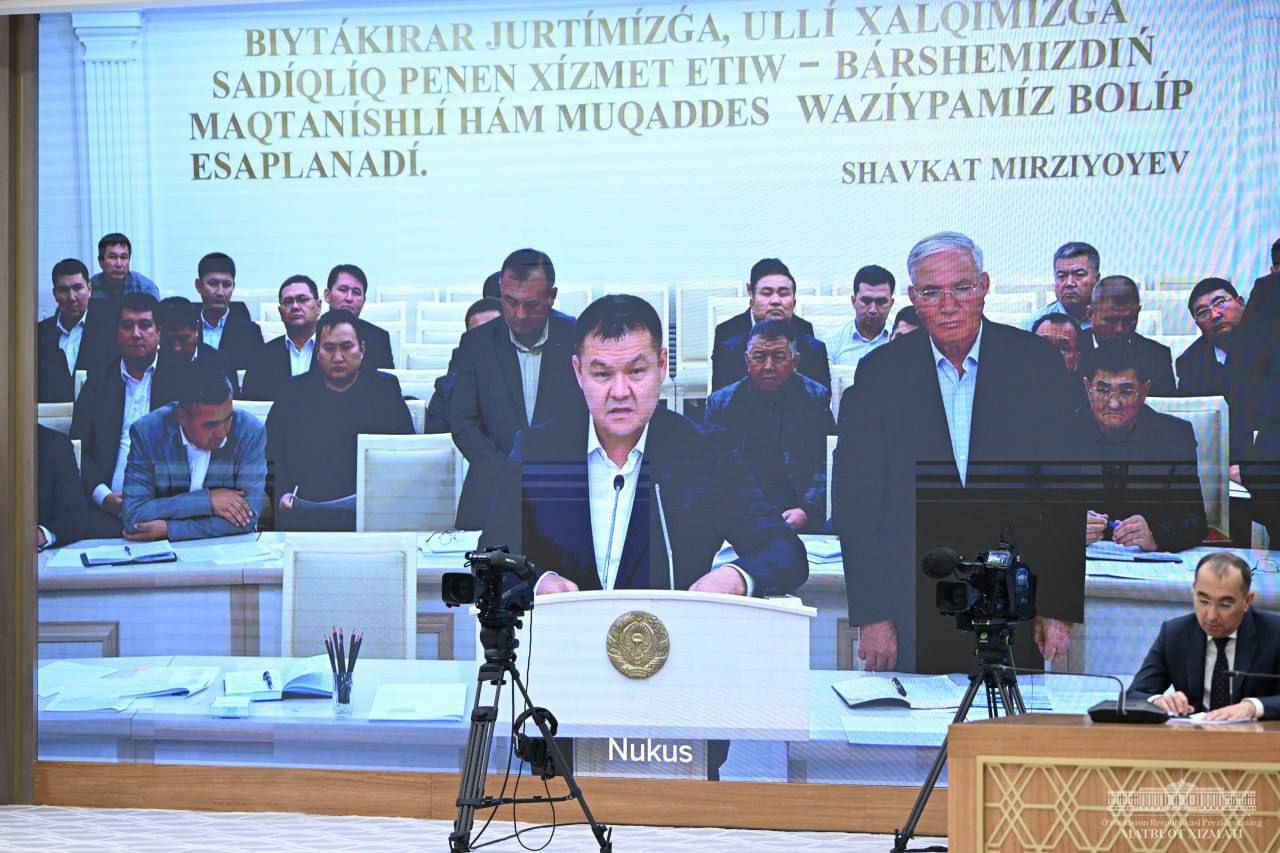
07.11.2024
On November 7, President Shavkat Mirziyoyev chaired a video conference meeting on measures for rational use of water and energy resources, as well as loss reduction in agriculture.
Today, the world is witnessing an increase in environmental problems and natural disasters. The region is facing a threat of water shortage, and Uzbekistan is taking active measures to introduce water-saving technologies and protect this valuable resource.
In particular, by concreting 550 kilometers of canals and ditches, water supply has been improved on an area of 200,000 hectares, which will save 450 million cubic meters of water annually. Farmers and clusters also concreted 13 thousand kilometers of internal networks.
The water management system has been reformed: a water metering system has been introduced in the districts, and farmers have learned to control water consumption. The transparent system made it possible to double the volume of water supplied to the fields this year, as well as to account for an additional 6 billion cubic meters.
Nevertheless, pressing problems remain. For example, supplying each cubic meter of water for clusters and farmers costs on average 212 soums, while in Bukhara, Kashkadarya and Namangan provinces the cost is 2-3 times higher.
In recent years, $1 billion has been allocated to modernize large pumping stations such as Karshi, Amu-Bukhara and Amu-Zang. However, due to the deterioration of medium and small pumps, the cost of water continues to rise. Despite reduction of water losses by 10-15 percent through concreting of canals, losses are still high in 20 districts.
Taking into account these problems, the following tasks were identified at the meeting. At present, 18 thousand kilometers of main canals and 94 thousand kilometers of internal canals are to be concreted. 800 billion soums will be allocated for these works next year.
Last year, the cost of concreting was halved thanks to support that included the provision of machinery, labor and construction materials. Through direct contracts with contractors for cement supply, the cost of production can be further reduced by 20 percent.
It was also noted that water flow in concreted canals is accelerated, which creates opportunities for the construction of small hydropower plants. The construction of 148 such stations with a total capacity of 11 megawatts has been started in Navoi region. In the future, it is planned to build 2 thousand micro-hydroelectric power plants, which will allow receiving additional 600 million kilowatts of electricity annually.
Responsible persons have been instructed to develop and communicate to entrepreneurs the terms of participation in such projects.
The President cited successful examples. In particular, in Dustlik district of Jizzak province, a project worth $21 million to introduce an intelligent water supply management system has been completed. Meters and video cameras have been installed at 2 thousand points. Automated management saved 20 percent of water, and repair of irrigation networks saved another 10 percent. Water management has been transferred to the private sector. For the first time, payment for water will be made in advance.
Hokims are instructed to study this experience and implement it in areas with problematic water supply.
Currently, more than 1.6 thousand pumping stations are used for irrigation of lands in the country, which require significant energy inputs. Therefore, 2025 has been declared the year of increasing the efficiency of pumping stations in the water sector.
Cooperation with private partners and installation of energy-saving pumps and solar panels will reduce electricity consumption by 20 percent. In Khorezm province, farmers are already implementing such solutions, receiving additional income from selling surplus energy to the state in the amount of 7-8 million soums monthly.
Responsible persons have been instructed to expand this experience and support it.
To date, water-saving technologies have been introduced on an area of 2 million hectares, which saved 2 billion cubic meters of water only last year. However, on some fields the equipment is not functioning efficiently.
Now this issue will be taken under strict control. Next year, water-saving technologies will be introduced on another 500 thousand hectares. The system of subsidizing laser field leveling, previously introduced in Karakalpakstan, will be extended to Khorezm province, and the use of laser leveling in other regions will be expanded.
Collection of flood waters in spring and fall is another important source of water. Such structures will be built in Samarkand, Kashkadarya, Surkhandarya, Namangan, Fergana and Tashkent regions, which will improve water supply on 50 thousand hectares. “Uzbekhydroenergo” company has developed a two-year plan for work in this area.
The President pointed out that digitalization is the only way to make fundamental changes in the water sector.
Online control systems and smart meters have been introduced at pumping stations. However, there is still no information system for collecting and analyzing data from these devices. Accounting and calculation of water consumption remain complicated.
In this regard, the Center for Digitalization of the Water Sector will be established under the Ministry of Water Management, where a unified information system for water consumption accounting and control will be launched.
Responsible persons are charged to develop a program of priority projects in the water sector until 2030.
Opinions and proposals of ministers, khokims and specialists on the discussed topics were delivered at the meeting.

